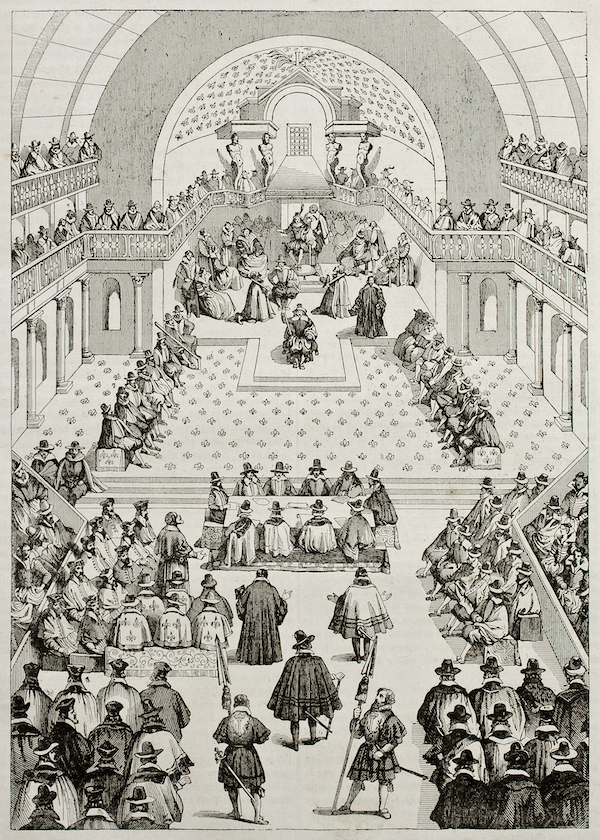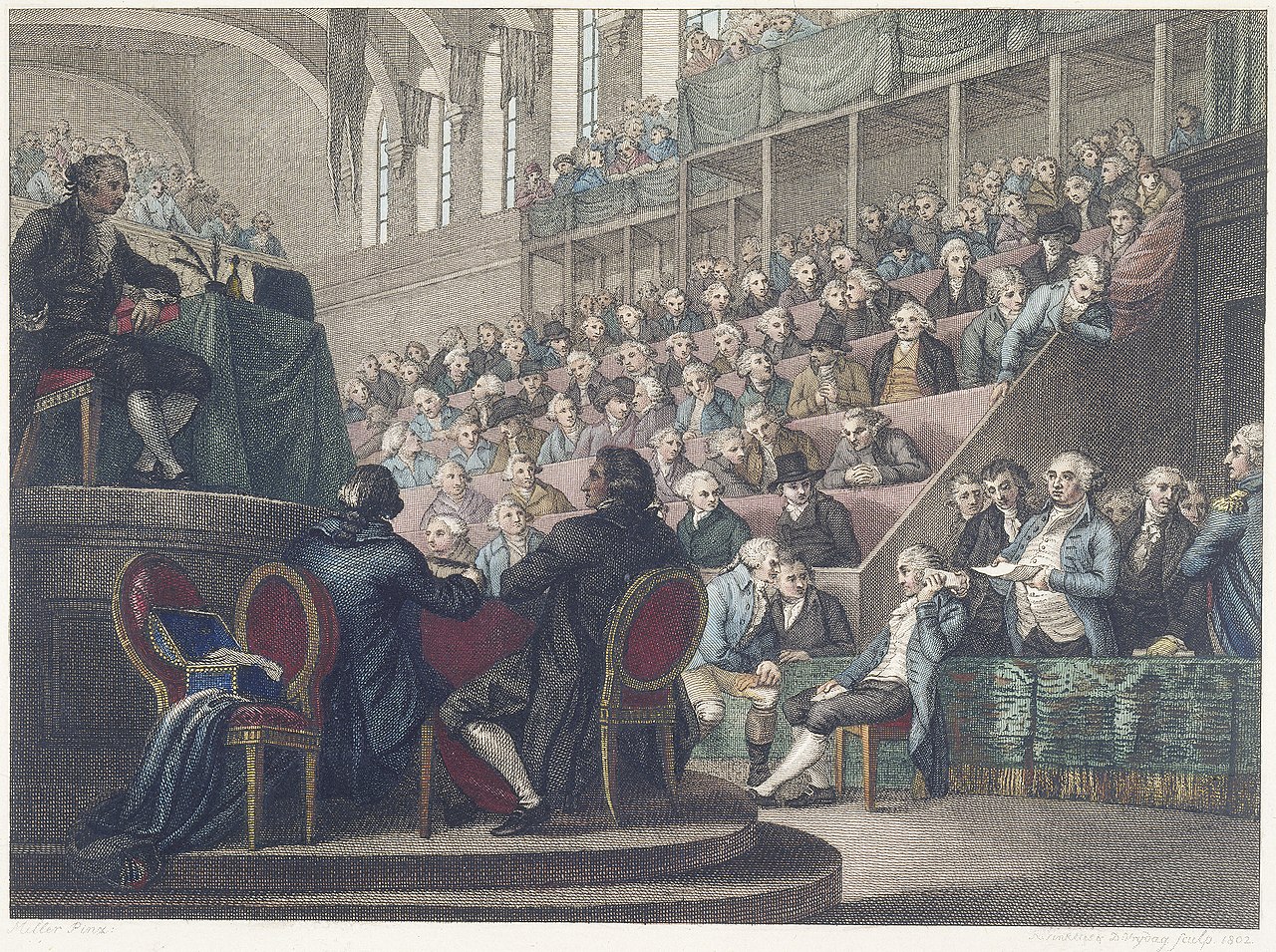Lessons from the French Revolution
Lecturer
- When the revolution began in 1789, France was an absolute monarchy – nobody thought that it could become a republic.
- A lot of the political thought in that initial period went into arguing for a new vision of representation: the idea that sovereignty is located in the people.
- A crucial concept was accountability: the king was arrested, put on trial and executed in a very short space of time.
An absolute monarchy
The path from the monarchy to the republic was long and difficult. When the revolution began in 1789, France was an absolute monarchy – nobody thought that it could or should become a republic. The general view was that the absolute monarchy needed reforming. Of course, people understood that there was a recently founded, large-scale modern republic on the other side of the Atlantic, but that was not the vision for France in the first instance.
Major issues
There was an issue with the finance of the absolute monarchy. There had been, throughout the 18th century, progressive attempts to reform the taxation system, none of which had succeeded. Louis XVI agreed to call the Estates General, the largest representative body in France – which, in fact, had not met for 175 years, not since 1614 – because the regime was teetering on bankruptcy. But when the three estates – the clergy, the aristocracy and the Third Estate – sent their representatives to Versailles, the Third Estate, which basically comprised everybody who wasn’t part of the clergy or the aristocracy, claimed that they represented the nation and that they had the legitimate cause of coming up with a new representative constitution for France.

Estates General in Palais Bourbon. Old illustration, Paris. By unidentified author after print of 17th century of Hennin collection. Published in Magasin Pittoresque, Paris, 1840. By Marzolino.
Electing a representative
There was huge excitement in the idea of electing a representative. Because the representative body of the Estates General hadn’t met for a very long time, it was perceived as a new opportunity to assert the importance of representation. In the first instance, there was great concern that there would be an attempt for voting by estate or voting by order. What that meant was that the clergy and the aristocracy would be able to outvote the Third Estate on every issue, if it were simply a question of allowing the individual estates to decide matters for themselves. Much of the political thought in that initial exciting period went into arguing for a new, more egalitarian vision of representation, and that is where the idea of sovereignty being located in the people – in the whole nation – became so important.
The idea of representation
Did the idea of representation come from the grassroots or were there specific theorists interested in trying to formulate how to think about representation in a large modern State? The answer is definitely the second. There were very prominent theorists such as the Abbé Sieyès and the Marquis de Comte d’Orsay. They contributed specific, intricate, important ideas on how to think about representation and how to think about a modern government that draws its legitimacy from the sovereignty of the people.
How the representation got put in place
The question of how the representation got put in place at the beginning of the revolution is a very important one. The delegates had been elected to the Estates General, to represent the clergy, the aristocracy or the Third Estate. But when the Third Estate rebranded and reconfigured itself as the representatives of the nation, they invited the members of the other two estates to join them and no longer hold themselves apart from the representatives of the nation. The technical problem was that everybody knew this was, in a certain way, a compromise: they didn’t risk asking the people to elect representatives to the National Assembly, which would come up with a new constitution, because that might have been the end of the revolution. So, they took the representatives they had – those who had been elected for a different purpose – and configured them into the National Assembly. Then, they began on the constitutional debates.
The collapse of the monarchy
Their first attempt at a constitution after the revolution was a constitutional monarchy. The project was to try and reconfigure the absolute monarchy as a constitutional monarchy, and that involved something very difficult, which was cutting down to size an absolute monarch and fitting him inside the structure of a constitutional monarchy. It took many months of debate.
When it was finally achieved, it lasted less than a year. The reason it collapsed was that the king immediately started using the veto he had been given under the constitution, and there was a tremendous fear of strong, executive power. The fear was that the king would continue to operate as an absolute monarch, and that the executive power that he had been given would be the channel into reviving what he had previously had.
What happened next was, essentially, the collapse of the monarchy, as had not yet happened since the revolution. From 1789 until the collapse of the constitutional monarchy, there was the hope that it was going to be possible to integrate the king into the new regime. When it became clear that it wasn’t, he was effectively arrested, put on trial and executed in a very short space of time.

Defence speech of Louis XVI at the Assemblée de la Convention, salle du Manège, palais des Tuileries, 26 December 1792. Wikimedia Commons. Public Domain.
The French Revolution vs. the American Revolution
It’s interesting to think about parallels between the American Revolution and the French Revolution, with both eventually establishing large-scale, modern representative republics. However, there are extremely important differences which were apparent to the French revolutionaries when they looked at what had already happened in America. The most important one was that what had been established in America was a federation of small republics, and there was no intention of trying to establish any kind of federal system in France, at that time. So, they were aware that what they needed was a different kind of model, one that could be based on the unity of the nation and not as a series of small republics.
Where there is similarity is on the question of declarations of rights. The important figure here is the Marquis de Comte d’Orsay, who was very interested in the declarations of rights that came out of the process of founding the American republic. He played a very prominent part in the early debates of the National Assembly, talking about how to think about a declaration of rights for the French republic. He wanted to go further, as did many of the other revolutionaries: they wanted their declaration to be a universal declaration of rights for man and citizen. Comte d’Orsay was one of the very few to dispute the exclusion of women from that title. But the aspiration was for a universal declaration, and that was building and going further than what had been achieved in America.
What can the French Revolution teach us?
The crucial concept is accountability. There is always, from the very beginning of those debates, a recognition that when you choose your elected representatives to wield power on the part of the people, they must be held accountable. That goes beyond simply being able to throw those representatives out at the next election. There are questions of how to prevent corruption and what to do about corruption, and these are questions which we still live with and which we don’t necessarily have better answers to than they did at that time.

Representation of the Coup d'Etat of the 18 Brumaire an VIII. Wikimedia Commons. Public Domain.
Failure to maintain a representative republic
There are many different ways to explain the failure of the revolution to stabilise a modern representative republic in the years from 1789 until 1799 and the coup that brought Napoleon to power. One of the most important is through the failure of constitutional design. There was so much emphasis placed on limiting the executive power under the constitutional monarchy, and that fear of a strong executive lasted through many of the subsequent constitutions. As a result, by the time Napoleon came to power, there was almost a desperate need for a strong government. There had been a long period of time without it and a long period of immense disruption – a huge fatigue at that point with the upheavals and with the devastation of the revolution. So, in many respects, the initial project of trying to curtail the executive power cast a lasting shadow over the constitutional events that happened subsequently.
Discover more about
the French Revolution
Scurr, R. (2014). Unfreedom and the Republican Tradition in the French Revolution. In C. Dahl & T. A. Nexö (Eds.), To Be Unfree: Republicanism and Unfreedom in History, Literature, and Philosophy (pp. 93–115). Political Science.
Scurr, R. (2011). Who Were the Sans-Culottes? Modern Intellectual History, 8(2), 447–455.